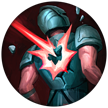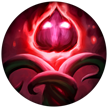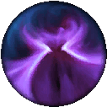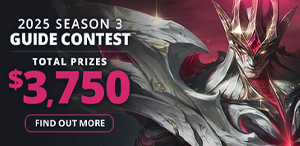This build has been archived by the author. They are no longer supporting nor updating this build and it may have become outdated. As such, voting and commenting have been disabled and it no longer appears in regular search results.
We recommend you take a look at this author's other builds.
This guide has not yet been updated for the current season. Please keep this in mind while reading. You can see the most recently updated guides on the browse guides page
 Thank You!
Thank You!
Your votes and comments encourage our guide authors to continue
creating helpful guides for the League of Legends community.
Recommended Items
Runes: Electrocute + Sorcery











+10% Attack Speed
+9 Adaptive (5.4 AD or 9 AP)
+6 Armor
Spells:

Flash

Smite
Items
Ability Order

 |
Hi, I'm PsiGuard and welcome to my I've been playing Elise for several years now, ever since Riot cemented her role as a jungler. Since most of the other junglers I play are physical damage dealers, Elise provides a nice balance for my champion pool. There's some room for outplay in her kit, yet she only has to worry about one skillshot, which makes her challenging but not too difficult to play consistently. Before we begin, I'd like to give a big thank-you to Jovy for her awesome graphics and help with coding this guide (as well as my other guides). Be sure to check out some of her other work at her signature shop and her own guides! |
|
About Elise 🕸 Runes 🕸 Spells 🕸 Abilities Ability Sequence 🕸 Item Build 🕸 Jungle Monsters Plants 🕸 Warding 🕸 Jungle Routes 🕸 Ganking Wave Management 🕸 Late Game 🕸 Conclusion |

 |
Elise is a pressure jungler whose job it is to secure early leads for her team. She can be built for high burst damage or rounded out with more durability should her team require it. Elise's crowd control and mobility allows her to effectively gank any lane and gain safe vision of the enemy jungle. Your goal as an Elise player should be to have a high impact on the early game and snowball those small advantages into larger leads that will win you the game. Elise's strength comes from her strong and versatile early game. She has innate health sustain from Elise's biggest weakness is her lackluster scaling. When Elise has a gold lead and can afford to build damage items, she can scale decently as long as she stays ahead of the enemy team in gold. However, if Elise does not gain an early lead, she loses kill potential and may be forced to build more defensively. With only |




|
This keystone gives you the best single-target burst and it's on a reasonably short cooldown so you'll be able to use it once per fight in most cases. I don't recommend |

|
Slightly better than |

|
Pick up |

|
Out-of-combat movement speed helps you show up to fights faster and get into position for flanks. The main competitor here is the spellvamp from |


|
Gives you easy access to mobility via |

|
You can roam up/down river faster and you'll have a mobility advantage against most champions if you fight/chase in the river. You'll also have more AP and mobility any time teams fight over dragon or baron. The other option here is |



|
This spell is essential for jungling, as it unlocks the jungle-only items which you need to keep up in experience. The spell is also essential for securing monster objectives like buff camps, dragon and baron. Building |

|

|
Flash - This is a core spell on most champions in the game and Elise is no exception. In addition to the flexibility it adds by allowing you to dodge skillshots, hop walls and escape death. You can use Flash to extend the effective range of |



 |
 Human Form
Human FormWhen Elise's abilities hits a target she gains one dormant Spiderling, up to 2 / 3 / 4 / 5. |
|
Remember to switch to |
 |
 Spider Form
Spider FormElise's basic attacks deal 10 / 20 / 30 / 40 (+ 30% AP) bonus magic damage and heal her for 4 / 6 / 8 / 10 (+ 10% AP) on-hit. |
|
The extra damage and healing on basic attacks in |

The % health damage on this ability makes it effective against any target, especially large or epic monsters. The damage is based on the target's current health, so keep in mind it's much more effective against high health targets rather than low ones. It still does decent base damage, so feel free to use this along with an autoattack to finish off escaping enemies.
|
|
Against jungle monsters, using One neat effect of this ability is that it will cause all of your spiderlings and your 
|

|
If the spider does not hit an enemy before reaching the target location, it re-targets and chases down a nearby enemy, prioritizing champions. The spider gains bonus movement speed, based on its proximity to its target. The range on this ability is variable, so you can choose to send the spiderling very close to you or to max range. Usually you'll want to send it the full distance, so make sure you are careful not to accidentally cast the spell too close to you. The spider gives vision of the area around it, making it a safe way to check nearby bushes for enemies. Since we start W for the best jungle clear, this means you can even use it at level 1 to scout bushes if needed. 
|
 |
 Spider Form
Spider FormPassive Spiderlings gain bonus attack speed. Active Elise gains 60 / 80 / 100 / 120 / 140% bonus attack speed for 3 seconds. |
|
The bonus attack speed only functions in This ability resets your autoattack timer, so you'll almost always want to take advantage of that. Cast W immediately after an autoattack for a swift followup attack. 
|

 |
 Human Form
Human FormElise fires a web in the target direction, granting sight of the first enemy hit for 1 second (does not reveal invisible targets) and stunning them for 1.6 / 1.7 / 1.8 / 1.9 / 2 seconds. |
|
This is your skillshot CC, so be very patient when choosing when and where to cast it. Missing this ability means you likely won't get another chance since the cooldown is quite long, so in any gank you must land this or at least force the enemy to blow You can use While it's usually best to use 
|
|
There are two ways to cast Casting E on a target will lift you into the air before immediately descending on the target's location at time of cast. This can be useful for chasing targets at the edge of your range since you'll drop very quickly and even if they While 
|

 |
Elise transforms into a menacing spider, gaining 25 bonus movement speed, melee basic attacks with 125 range, and access to her arachnid abilities. Additionally, Elise unleashes all stored Spiderlings. Ranks in this ability increase the bonuses of |
|
When clearing monsters, stay in The transformation has a 4 second cooldown, so keep that in mind when deciding which form to start in when entering fog-of-war or approaching enemy champions in ganks, skirmishes or team fights. Human-to-Spider is the best approach when flanking since you'll be able to 
|


Take W at level one to scout bushes and deal AoE damage in fights as well as giving you the best level 1 DPS for your jungle clear, regardless of which camp you start at. Take Q at level 2 to give you more damage to monsters. I always recommend taking E at level 3 because not only do you likely want to gank before you are level 4, but even if you don't, you can never be certain whether or not you'll encounter the enemy jungler. Having your mobility and CC spell at level 3 is by far the safest and strongest option.
Max
As with most champions, you'll want to max your ultimate as early as possible with ranks at 6, 11 and 16. Ranking up




|

|
|


|
Since Elise is heavily dependent on impacting the game during the laning phase and early-mid game, vision denial is generally more important than adding more wards to the map once you've gotten past the first jungle clear or two. I recommend switching to |


|
|

|
|


|
Not much to say about this item since it should be pretty obvious that you're going to buy the AP enchantment on a mage jungler like Elise. I don't recommend buying |

|
|

|
Magic pen is a useful stat on Elise since she has great burst damage against squishies and % HP damage against tankier enemies. You don't always need to upgrade this immediately to |


|
You'll often need a |


|
This is an easy item to build since it upgrades out of |

|
A great item for poking from afar with |

|
Rylai's is a helpful supplement to |


|
Zhonya's is a bit expensive compared to other damage items, but its active can be game-changing in the right circumstances. Look for delayed spells that can be easily dodged, or setups like snares and slows that allow you to use Zhonya's to avoid followup damage. This item is especially good against combo mages and assassins like |

|
Banshee's doesn't give the greatest offensive or defensive stats, so check to see what kind of spells you can block with the spell shield before building this. Generally look for champions like |



Familiarize yourself with these spawn times and respawn timers so you know what to expect in-game.
 |
Dragon (Elementals & Elder) Spawns At: 5:00 Respawn Time: 5:00 Elder Dragon Spawns: 6:00 after a team gets 4 Drakes Elder Dragon Respawn: 6:00 |
 |
Baron Nashor Spawns At: 20:00 Respawn Time: 6:00 |


Plants are stationary, neutral units with 1 health. They can be destroyed with a basic attack to trigger an effect. Three different types of plants will spawn in the jungle and river. Their spawn timers and locations vary slightly but for the most part they are fairly predictable. The first spawn locations for all plants are predetermined.


|
First inner cone spawn: 1:15 - 1:25 First outer cone spawn: 5:00 - 5:30 Inner cone respawn time: 5 - 7 minutes Outer cone respawn time: 5.5 - 6.5 minutes |
- Knocks away nearby units (including the attacker) when destroyed — even over walls.
- Blast Cones spawn in two spots per jungle quadrant, an inner point toward the center of the quadrant, and an outer point near Baron/Dragon.
- In an Infernal Rift game (3rd Dragon is Infernal), additional Blast Cones will spawn near each tri-bush by Gromp, by the Wolf Camp, in front of each base's gates and in the alcoves.

|
First spawn: 3:00 - 3:30, always at each quadrant’s spawn point nearest to the side lanes Next spawn time: 5 - 6.5 minutes at either spawn point, starting once a given quadrant's Scryer's Bloom is destroyed |
- When destroyed, releases vision-granting pollen in a large cone that flies in the direction the attacker was facing, revealing units and wards for 12 seconds (3 seconds on champions).
- Scryer's Bloom can spawn in two spots per jungle quadrant, close to river ramps.
- Only one Scryer's Bloom can be present per quadrant.
- In a Cloud Rift game (3rd Dragon is Cloud), additional Scryer's Blooms will spawn in front of each base's gates and in front of each tri-brush in the river.

|
First spawn: 6:00 - 6:30 minutes Respawn time: 5.5 - 7 minutes |
- Drops 5 fruits on the ground when killed.
- Each fruit heals for 3.5% of max health or 8 (+6 per level) flat health, whichever is higher.
- Eating a fruit slows you for 35% for 0.25 seconds.
- Honeyfruit spawn along river walls, starting near Dragon or Baron pits and slowly extending closer toward lanes over the course of the game.
- If a Honeyfruit isn't taken before its respawn timer completes, a second Honeyfruit may spawn. No more than two Honeyfruits can exist per half of the river.


As a jungler, you have the most agency when it comes to traversing the map to place down vision, especially in the enemy jungle. When it's safe to do so, try to place deep wards to keep track of the enemy jungler.
Placing a
As the game progresses, you may have to start placing wards nearer to your base if you're losing, or deeper into the enemy jungle if you are winning. Always remember to place a
Below are some of the more valuable ward spots. Of course, warding is always situational, so don't feel restricted to only using these placements if the situation calls for something else.
 |
 |
|
Blue side stealth ward locations
|
Blue side control ward locations
|
 |
 |
|
Red side stealth ward locations
|
Red side control ward locations
|


Standard Routes
Blue - Gromp - Red - Gank: This is a staple Elise route that'll give you a super fast level 3 gank with double buffs. You can also clear this in the other direction (Red - Blue - Gromp - Gank) to pressure the opposite side lane.
Blue - Gromp - Wolves - Red: A more efficient version of the above route. Use this if you don't expect to be able to gank immediately at level 3.
Vertical Jungling
Vertical jungling is when both junglers are repeatedly clearing one half of the allied jungle and one half of the enemy jungle, favoring one side of the map. This splits the map into a "strong side" and "weak side" for each team. For example, if you're on blue team and are repeatedly clearing your red-side jungle (south) and the enemy blue-side jungle (east), your team's bottom side will be the strong side of the map. You'll be in a better position to gank bottom lane without fear of counterganks and you'll have better vision control and objective control. Likewise, the opposite side of the map will be dominated by the enemy jungler, making it your team's weak side.
Vertical jungling can be an active choice you make or a forced one due to a poor matchup. For example, you see
An example of an active choice would be if you and your team (this works better in arranged teams than it does in solo queue) decide to focus all of your team's pressure on one side lane at the expense of the other. Maybe you have a hypercarry bottom that your team will be camping and a
Vertical jungling is pretty complicated for new junglers and can be pretty messy outside of coordinated teams. Be open to the concepts and feel free to practice it, but for most players I recommend sticking to more standard routes or simple, quick invades while you're still learning to jungle.



There are three main types of ganks for top lane: flanks, dives and lane ganks. Actually, this applies to bottom as well, but due to ward coverage your options are more limited there.
Flanks are the most straight-forward type of ganks; you gank when the enemy laner is overextended. From blue side, you can use the Blast Cone near the river bush for a sudden entrance to the river, or you can simply walk up river if there are no enemy wards. You can also go through the enemy northern jungle to flank through tribush if it's safe to do so. Approach in
Dives are very easy for Elise since you can reset tower aggro with
Lane ganks are a bit more complicated because they take time to set up and your top laner needs to be on the same page as you so they set up the wave properly. If your top is pushing, you can enter the lane bushes without being seen, then wait for the wave to reset to the middle of the lane and look for an opportunity to fight the enemy 2v1. The best time to engage is when the enemy goes for a last-hit on one of your minions, especially ranged or cannon minions since they're farther towards your side of the map. It can be hard to land

Mid lane ganks are pretty average for Elise. Not easy, but not too hard either. If the enemy mid is pushed, flank from river or the paths near raptors and wolves that lead to mid lane. Keep in mind a lot of mid laners will ward one side of the lane and hug that side to avoid easy ganks, so you may need to clear their vision or otherwise come from an unexpected angle.
Using fog-of-war to get into

Ganking bot is a lot like ganking top, except there's usually more vision from both sides. If you're blue side, using an
If you have a
Lane ganking through bottom can be even harder than top because bot laners can farm from range and expose themselves to less danger. They're also more likely to have the lane bushes warded. However, there are times where a timely lane gank can give you the edge you need to win the game, so don't be afraid to try it, especially if your bot lane has strong engage like



If you manage to kill your target in a successful gank, you'll usually want to help your laner push the wave to the enemy tower so that your minions are killed by the tower, denying the enemy laner gold and experience. The minion waves will also reset to the center of the lane, giving your teammate time to go back to base and buy items and return to a safe position. One exception to the push-after-ganking rule is if you gank very early in the game against an enemy with

After a successful gank, usually when pushing to the enemy tower, you may want to take a minion tax. This means you'll take some of the farm to help you keep up in gold since you had to spend time ganking rather than farming your jungle. You'll generally want to tax more heavily if your laner gets the kill off a gank and tax lightly if you took the kill. Many low-ranked players (and occasionally some high-ranked ones too) are selfish or ignorant and think that taxing their lane is going to ruin their farm and cause them to lose the lane. They're wrong, as taxing in moderation keeps a jungler's gold and experience relevant throughout the game, but if your laner freaks out because you took a few minions (or pushed their lane, some people think this is a bad thing all the time), you may want to just leave so they don't feed or AFK or something.

Holding lanes is an often necessary duty of a jungler and is something you should be happy to do (since it gives you a lot of gold and XP). If your laner dies or needs to go back to base, you may need to "hold" or "cover" their lane by clearing out enemy minions pushing to your tower. If the enemy laner goes back to base or is dead, you may wish to push the wave to the enemy tower. Only do this if you can finish pushing before the enemy laner gets back to lane or they can freeze it in front of their tower, making it difficult for your laner to farm safely. Usually holding a lane consists of either clearing the current wave that is at your tower or pushing completely to the enemy tower. Don't just sit in a lane and last-hit because it's a waste of your time.


As such,
Elise is fairly flexible and is moderately useful in pretty much any situation. She's least effective at hitting tanky front-liners with high MR but can peel enemy dive champions reasonably well by stunning them. She also has ranged autoattack and
In team fights you really only have threat on one target, so target selection is the most important thing to consider, stunning and focusing divers like
Most of all, try not to die, especially not for free. Regardless of your usefulness in team fights, your are the
As a final note,
If you can't win late game, there may be some mistakes that you can fix for the next game. However, apart from smart macro play, games on Elise are usually decided by what you can accomplish early, so that's where I recommend you focus your efforts on refining. It's much easier to win a game that's snowballed from an early lead than to come back from behind on a champion that doesn't scale well.


Thank you for reading my
A special thank you to those who have supported my guides with votes, Scout points and advice that have been instrumental in bringing my guides to the level of quality they are today.
 | A very special thank you to Jovy for her wonderful graphics used in this guide as well as her help with coding all my guides. All the fancy headers, table of contents and most of the other graphics you see in my guides are from her. Be sure to check out some of her other work at her signature shop and her own guides! |












 1,262,752
1,262,752
 41
41






















 Twitter
Twitter
 YouTube
YouTube
 Twitch
Twitch
 PayPal
PayPal

You must be logged in to comment. Please login or register.